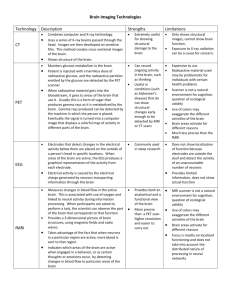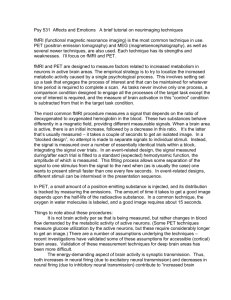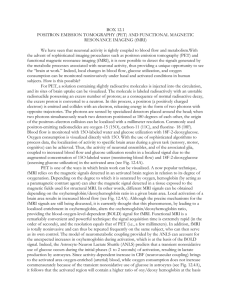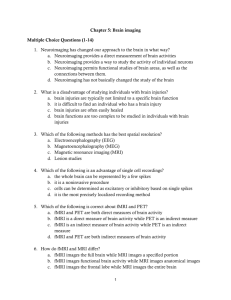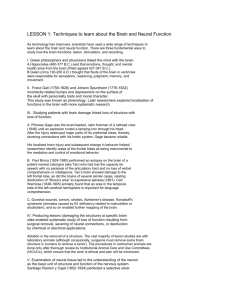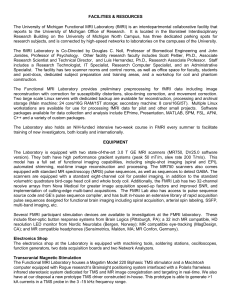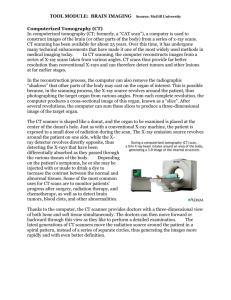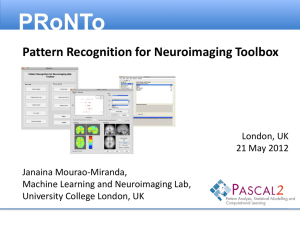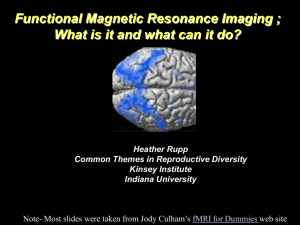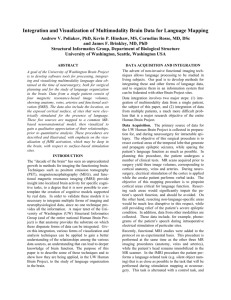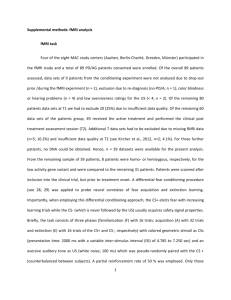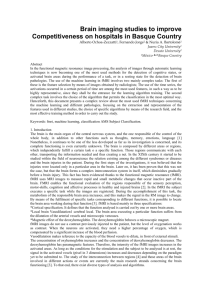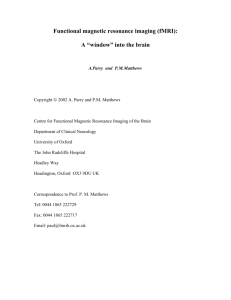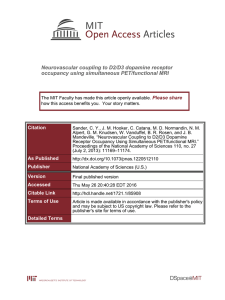Appendix 1: Functional Neuroimaging Methods
advertisement
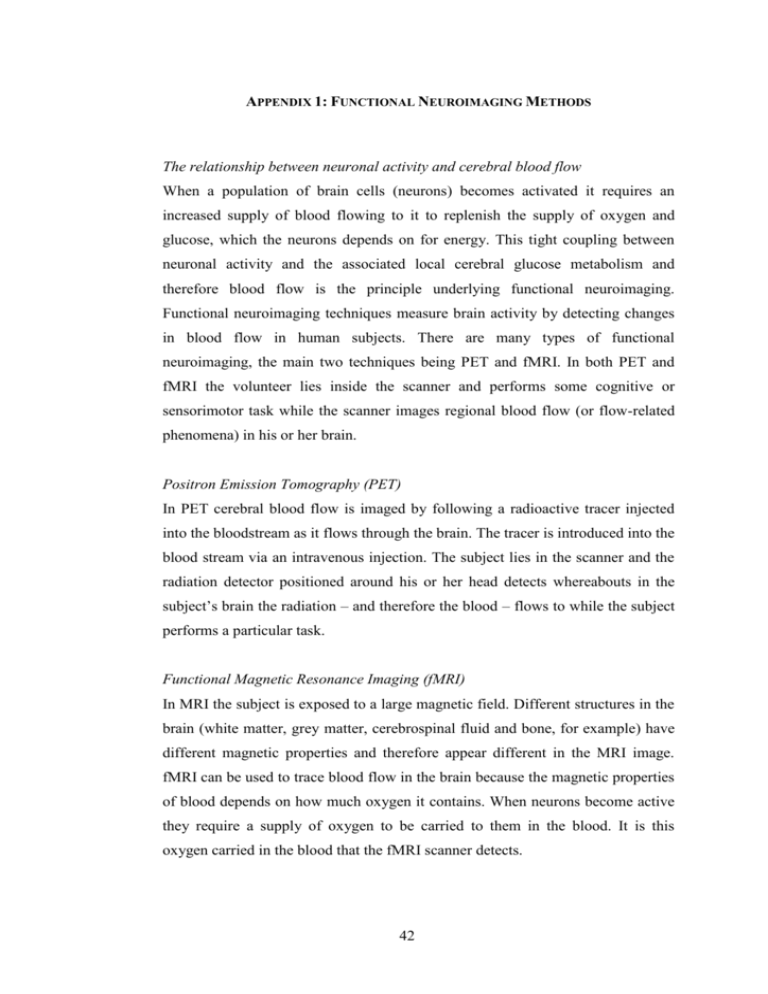
APPENDIX 1: FUNCTIONAL NEUROIMAGING METHODS The relationship between neuronal activity and cerebral blood flow When a population of brain cells (neurons) becomes activated it requires an increased supply of blood flowing to it to replenish the supply of oxygen and glucose, which the neurons depends on for energy. This tight coupling between neuronal activity and the associated local cerebral glucose metabolism and therefore blood flow is the principle underlying functional neuroimaging. Functional neuroimaging techniques measure brain activity by detecting changes in blood flow in human subjects. There are many types of functional neuroimaging, the main two techniques being PET and fMRI. In both PET and fMRI the volunteer lies inside the scanner and performs some cognitive or sensorimotor task while the scanner images regional blood flow (or flow-related phenomena) in his or her brain. Positron Emission Tomography (PET) In PET cerebral blood flow is imaged by following a radioactive tracer injected into the bloodstream as it flows through the brain. The tracer is introduced into the blood stream via an intravenous injection. The subject lies in the scanner and the radiation detector positioned around his or her head detects whereabouts in the subject’s brain the radiation – and therefore the blood – flows to while the subject performs a particular task. Functional Magnetic Resonance Imaging (fMRI) In MRI the subject is exposed to a large magnetic field. Different structures in the brain (white matter, grey matter, cerebrospinal fluid and bone, for example) have different magnetic properties and therefore appear different in the MRI image. fMRI can be used to trace blood flow in the brain because the magnetic properties of blood depends on how much oxygen it contains. When neurons become active they require a supply of oxygen to be carried to them in the blood. It is this oxygen carried in the blood that the fMRI scanner detects. 42 Comparison of PET and fMRI There are several advantages of fMRI over PET. Firstly, fMRI does not involve exposing the subject to ionising radiation. Therefore subjects can be scanned with fMRI on numerous occasions, and subjects can be of all ages. This is unlike PET, which because it involves exposing the subject to ionising radiation, cannot be used to scan women of child-bearing age or children. Secondly the temporal and spatial resolutions of fMRI are higher than PET. PET measures blood flow on a spatio-temporal scale of about 6mm and at least 30 seconds. fMRI has a spatiotemporal scale of about 1-3mm and one or more seconds. Thirdly, a PET scan takes significantly longer than an fMRI scan: approximately two hours compared to 30 minutes respectively. However, fMRI is very loud and earplugs must be worn by the subject to protect his or her hearing. In addition, the MRI scanner is more enclosed than the PET scanner, so can be a problem for claustrophobic subjects. FMRI images are susceptible to artifacts, especially in the temporal lobes, which makes PET more suitable for some studies. 43
